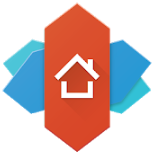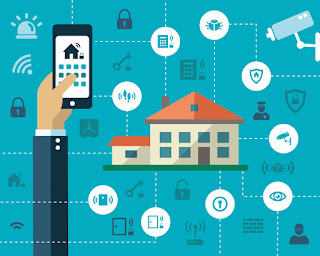Introduction
Why 123Movies4u Is So Popular
Let’s be honest—paying for every streaming service out there can seriously drain your wallet. That’s where 123Movies4u steps in. It's one of those platforms that movie lovers turn to when they want free access to the latest flicks and trending shows without signing up or paying a dime. Whether you're watching 123Movies4u Kannada movies or Hollywood blockbusters, it has something for everyone.
A Brief History of Online Streaming Platforms
Once upon a time, Netflix ruled the online streaming world. But over the years, alternatives like 123Movies, Putlocker, and others gained traction for offering the same content—minus the subscription fees. Among them, 123Movies4u carved out its niche, especially for regional films like 123movies4u Kannada selections and other language options.
What is 123Movies4u?
How It Works
123Movies4u isn’t your typical streaming site. It doesn’t host movies directly but acts more like a search engine that pulls content from different sources. You click, and boom—you’re watching a film in seconds.
If the main site isn’t working, users often look for a working 123Movies4u proxy or 123Movies new site link to continue enjoying seamless access to their favorite content.
Key Features of 123Movies4u
-
No Registration Needed: Stream instantly.
-
Free Access: No monthly bills.
-
Massive Library: From Hollywood and Kannada movies to anime—you name it.
-
Multiple Links: If one doesn’t work, try the next.
-
Mobile-Friendly: Many users search for a 123Movies4u app to enhance their mobile streaming experience, although no official app exists yet.
Is 123Movies4u Legal?
Understanding Copyright Infringement
Here’s the catch: many movies on 123Movies4u are copyrighted. Watching them without paying or proper licensing? That’s a legal grey area—or straight-up illegal in some countries.
Legal Alternatives You Should Know
Rather avoid legal issues? Here are some 123Movies4u alternative platforms that are completely safe and legal:
-
Netflix
-
Hulu
-
Amazon Prime Video
-
Tubi TV
-
Crackle
Pros and Cons of Using 123Movies4u
The Good Stuff (Pros)
-
Free and accessible to everyone
-
Massive collection, including All 1234 movies across various categories
-
No annoying sign-ups
-
Multiple quality options
The Not-So-Great Parts (Cons)
-
Legally risky
-
Ad-heavy experience
-
Potential malware threats
-
Site changes and fake clones
How to Safely Access 123Movies4u
Use a VPN for Protection
Always use a VPN (Virtual Private Network). It hides your IP and protects your browsing history from prying eyes. If the main domain isn’t available in your region, VPNs can help you access a working 123Movies4u proxy.
Beware of Fake Clones and Scams
Search for "123Movies4u" and you’ll see multiple results—some of which are scams. Always double-check forums or Reddit threads for legit working links. If you're looking for 123moviesfree4u download options, make sure to use antivirus tools to avoid malware.
How to Navigate the 123Movies4u Website
Categories and Genres
Looking for a comedy, thriller, or even Kannada movies? 123Movies4u categorizes its content, making it easy to find your perfect Friday-night binge.
Search and Filter Options
Use the search bar. Type in a title, genre, or actor’s name—it’ll narrow down results quickly.
Types of Content Available on 123Movies4u
Latest Movies and TV Shows
From recent blockbusters to ongoing TV series, the site updates content regularly to keep viewers hooked.
International Films and Documentaries
Love Korean dramas, Bollywood hits, or niche regional films? 123movies4u Kannada selections and international content give users a wide array of options.
Streaming Quality and User Experience
HD, Full HD, and 4K Options
Depending on the source, you’ll find videos in various resolutions—from 480p to 1080p, and sometimes even 4K.
Buffering and Load Time
Have decent internet? You’ll barely notice any buffering. Just brace yourself for a couple of pop-ups before the video plays.
Pop-ups, Ads, and How to Handle Them
What to Expect
Click "Play" and you might be greeted with 2–3 new tabs or pop-up windows—common with free streaming sites like this.
Best Ad Blockers for Smooth Browsing
Install:
-
uBlock Origin
-
Adblock Plus
-
AdGuard
These help limit intrusive ads and reduce distractions.
Devices Compatible with 123Movies4u
Smartphones and Tablets
Even though an official 123Movies4u app doesn’t exist, the mobile browser version works well on Android and iOS.
Smart TVs and Streaming Devices
Use casting or browser apps to enjoy high-quality streaming on larger screens with ease.
Mobile Experience vs. Desktop
Pros of Mobile Browsing
Quick and on-the-go entertainment. Especially useful if you're browsing All 1234 movies while commuting.
Why Some Still Prefer Desktop
Bigger screens, faster navigation, and fewer misclicks make desktop viewing more enjoyable for long binge sessions.
How to Download Content from 123Movies4u (If Available)
Is Downloading Even Possible?
Some streams allow users to access 123moviesfree4u download options, but they often redirect through third-party file hosting services.
Risks of Downloading
Downloading can expose your device to malware and legal issues. Proceed only if you understand the risks and have strong security software installed.
Is 123Movies4u Safe?
Malware, Trackers, and Other Dangers
Sites like this often run sketchy ads with embedded trackers or malicious code. Always browse with caution.
How to Stay Safe While Streaming
-
Use VPNs
-
Enable ad blockers
-
Avoid clicking unknown pop-ups
-
Don’t download files from shady sources
Top 5 Alternatives to 123Movies4u
1. SolarMovie
Offers a user-friendly interface with reliable content.
2. FMovies
Well-known for high-quality HD links and constant updates.
3. Putlocker
Still a go-to platform for free streaming enthusiasts.
4. YesMovies
Well-organized, with genre-based sorting.
5. Crackle
Completely legal and free—backed by Sony.
Conclusion
123Movies4u remains a popular go-to for free streaming, offering access to movies in various genres and languages—including a rising interest in 123movies4u Kannada films. But the convenience comes at a cost: legal uncertainty, ad clutter, and potential safety issues. For a safer experience, consider exploring a 123Movies4u alternative like Crackle or Tubi. If you still choose to stream here, take the proper precautions with VPNs and ad blockers—and remember, there’s no such thing as “completely free” on the internet.
FAQs
Is 123Movies4u still working?
Yes, but domains shift frequently. Users often rely on the latest 123Movies new site or a working 123Movies4u proxy link.
Do I need to create an account to use 123Movies4u?
No account needed. That’s one of its biggest attractions.
Is it possible to watch movies without ads?
Not entirely. Even with a good 123Movies4u app (if one existed), ads fund the service. Use an ad blocker for a cleaner experience.
Can I use 123Movies4u on iPhone or Android?
Yes, just open it on your browser. No need for any download, though many search for an unofficial 123Movies4u app.
What are the safest alternatives to 123Movies4u?
Go for legal options like Crackle, Pluto TV, or Netflix. They’re reliable 123Movies4u alternatives that offer peace of mind.
































